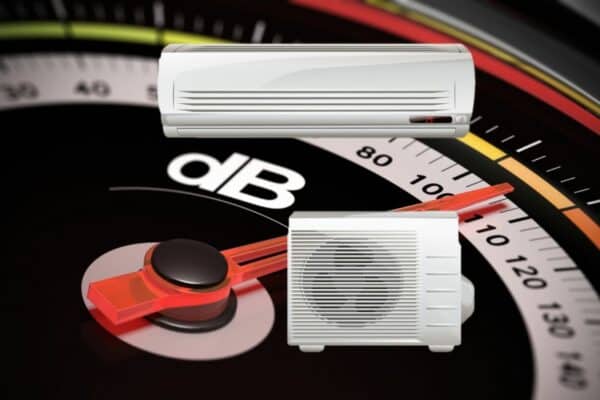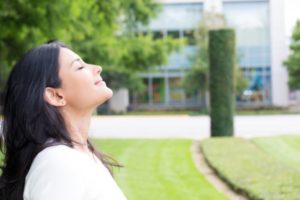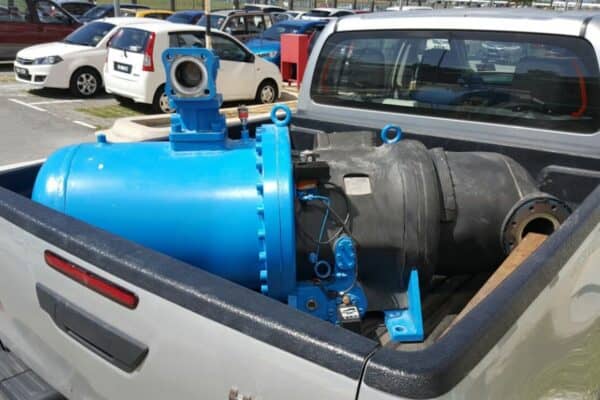Do Air Conditioners Take Air from Outside? (Some Do)
Many people often stay in a room with the air conditioner turned on for a prolonged period of time. So, they wonder if air conditioners take air from outside to keep them refreshed. Hence, I did some research.
It turns out that air conditioners usually don’t take air from outside unless they have a fresh air intake vent. Air conditioners that come with a fresh air intake vent can permanently bring in a small amount of fresh air from outside to keep you stay refreshed.
Whether or not an air conditioner takes air from outside is depending on the type of air conditioner and hence, you need to choose a certain type of air conditioner in order to have it bring you fresh air.
Split Air Conditioner
Split air conditioners are the most common type of air conditioner used around the world. A split air conditioner comprised of one indoor unit and one outdoor unit.
Some split air conditioners have multiple indoor units connected to one outdoor unit. These types of split air conditioners are known as multi-split air conditioners.
Most split air conditioners don’t take air from outside. However, ceiling cassette and ceiling ducted type of split air conditioners have the option to connect a fresh air duct in order to take air from outside.
The split air conditioners that we often see mounted up high on the wall are known as the wall-mounted type. Meanwhile, the ceiling cassette type is those split air conditioners that are installed on the ceiling at the center of the room that blows air in multiple directions.
Split air conditioners can also be ducted and they are known as the ceiling ducted type. This type of split air conditioner is the one that often has a fresh air duct and takes air from outside.
Wall-Mounted Type
Although the wall-mounted type of split air conditioner is the most used one in homes, it is the type of split air conditioner that doesn’t have an option for you to take air from outside.
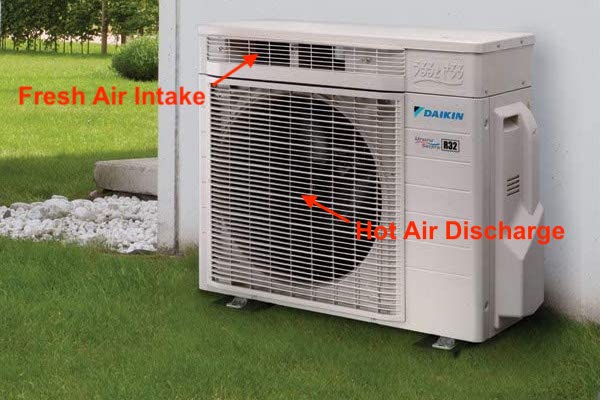
I’ve seen many different types of wall-mounted split air conditioners. So far, I have only encountered the Daikin Ururu Sarara series (click to view on Amazon) that has a built-in fresh air intake vent to take air from outside.
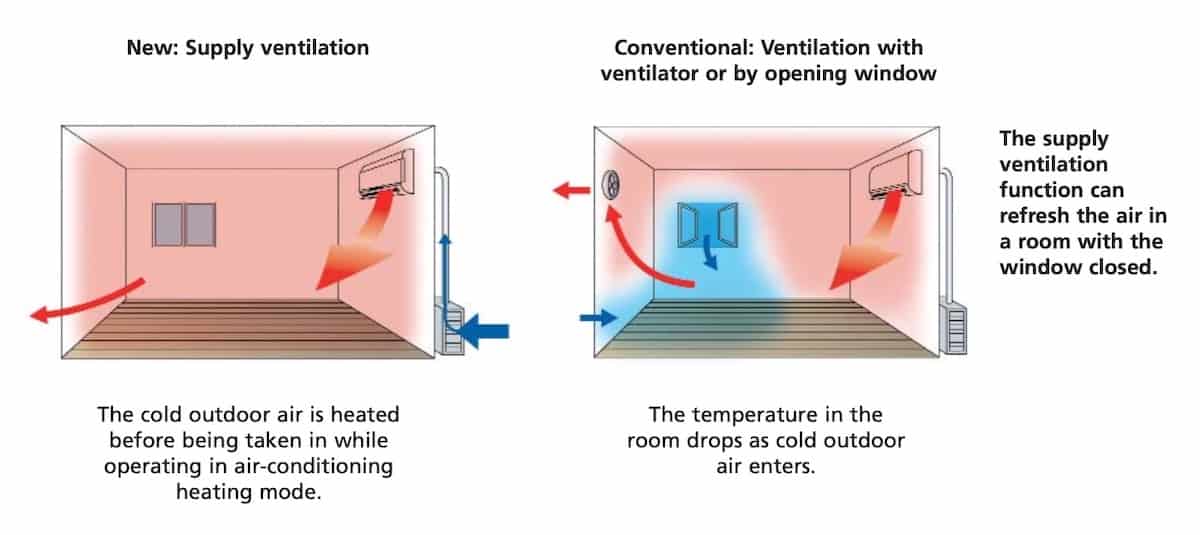
It is a clever design that brings in fresh air through the outdoor unit. In addition, with the fresh air intake, it also has much better control of the indoor humidity level.
For the rest of the wall-mounted split air conditioners, you need to either go outside and get some fresh air or open the windows once in a while to let some fresh air come inside.
Ceiling Cassette Type
The ceiling cassette type of split air conditioners is not very common in homes. If they do, it is usually in large and luxury homes.
However, ceiling cassette split air conditioners are very common in commercial buildings such as retail stores, shopping malls and office towers.
Every ceiling cassette split air conditioner has a removable plate for fresh air intake. You can choose to connect a fresh air duct to take air from outside or just leave it as it is.

A good ceiling cassette split air conditioner is the Mitsubishi SZ-KF18NA Single-Zone (click to view on HVAC Direct) which is reliable and efficient.
A volume control damper is needed on the fresh air duct in case you want to turn off the fresh air intake on your ceiling cassette split air conditioner.
Based on what I’ve seen, most ceiling cassette split air conditioners are still not taking air from outside because they are usually used to serve a relatively small space.
If you have a large space, a ceiling cassette split air conditioner with a fresh air duct for outside air intake is an excellent air conditioning system.
Ceiling Ducted Type
The ceiling ducted type is the most common type of split air conditioner that does take air from outside via a fresh air duct.
Ceiling ducted split air conditioners are often found in luxury homes. They are hidden above the ceiling and use ductwork for air distribution.
Ceiling ducted split air conditioners don’t have a fresh air intake opening like the ceiling cassette type does. However, they can easily be connected to a fresh air duct thanks to the flexibility of the ducting system.
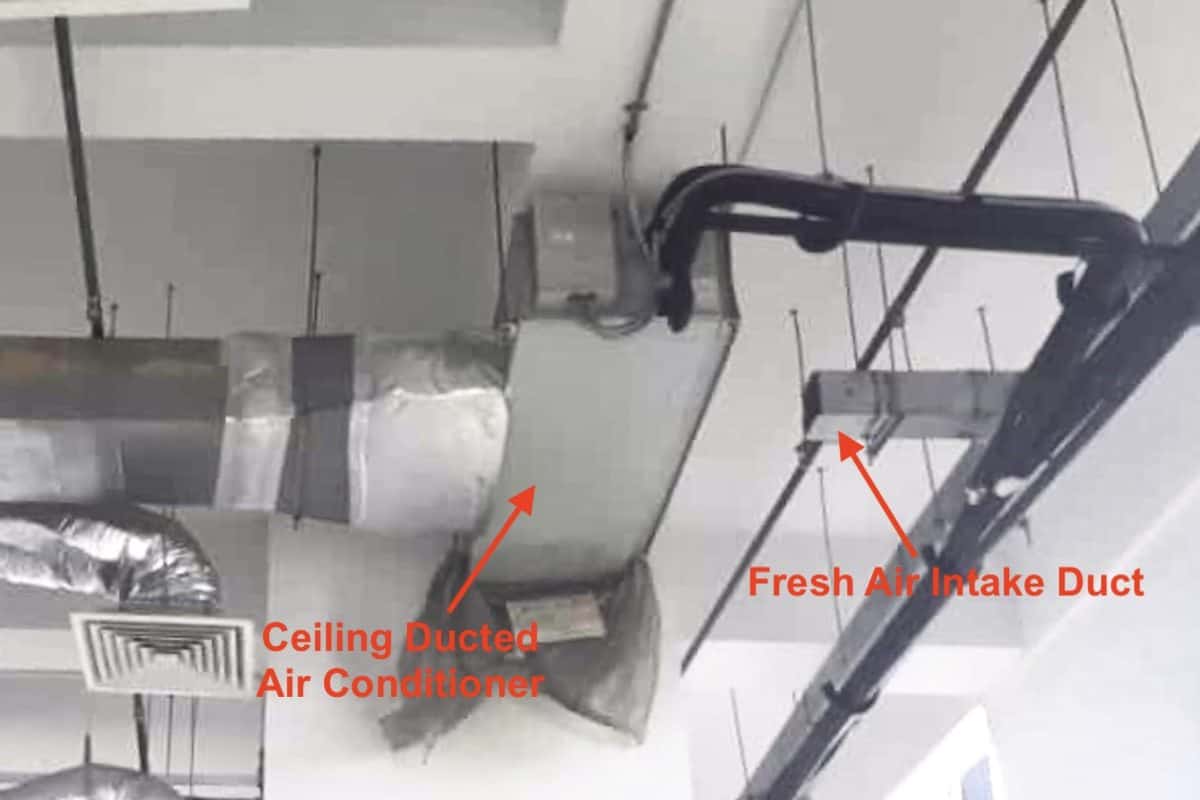
One of the examples of a ceiling ducted split air conditioner is the Mitsubishi Single Zone Concealed Duct (click to view on HVAC Direct) that is certified by Energy Star.
Although ceiling ducted split air conditioners offer better indoor air quality, they are still uncommon in typical homes due to the higher price.
Window Air Conditioner
Window air conditioners are very common in countries like the United States. They sit on the windows and thus, occupy the windows.
Most window air conditioners don’t take air from outside unless they have a fresh air vent. Some window air conditioners have a built-in fresh air vent that allows you to have the option to take air from outside by opening the fresh air vent manually.
Window air conditioners that have a fresh air vent are usually more expensive. Some are not that expensive but don’t expect to see a fresh air vent in low-cost models.
This Frigidaire 10000 BTU window air conditioner (click to view on Amazon) that cools up to 450 sqft is a good one with a fresh air intake vent that you can open or close to take air from outside.
A second option with a cheaper price is this LG 8000 BTU window air conditioner (click to view on Amazon) that has a fresh air intake vent and cools up to 350 sqft.

Usually, you just need to slide the vent lever to turn on/off the fresh air intake on window air conditioners.
Window air conditioners by nature are not powerful cooling machines. Hence, whenever you open their fresh air intake vent, expect to lose some of the cooling effects.
Portable Air Conditioner
Portable air conditioners are mobile air conditioners that require an exhaust hose to function properly. Do not confuse a portable air conditioner with an evaporative cooler.
Most portable air conditioners don’t take air from outside. Single-hose portable air conditioners don’t have the function to bring in fresh air from outside. However, dual-hose portable air conditioners can bring in fresh air using one of the hoses while discharging hot air through the other hose.
Usually, portable air conditioners have only one hose for hot air discharge. Nowadays, some portable air conditioners have two hoses where the additional hose is used to take air from outside.
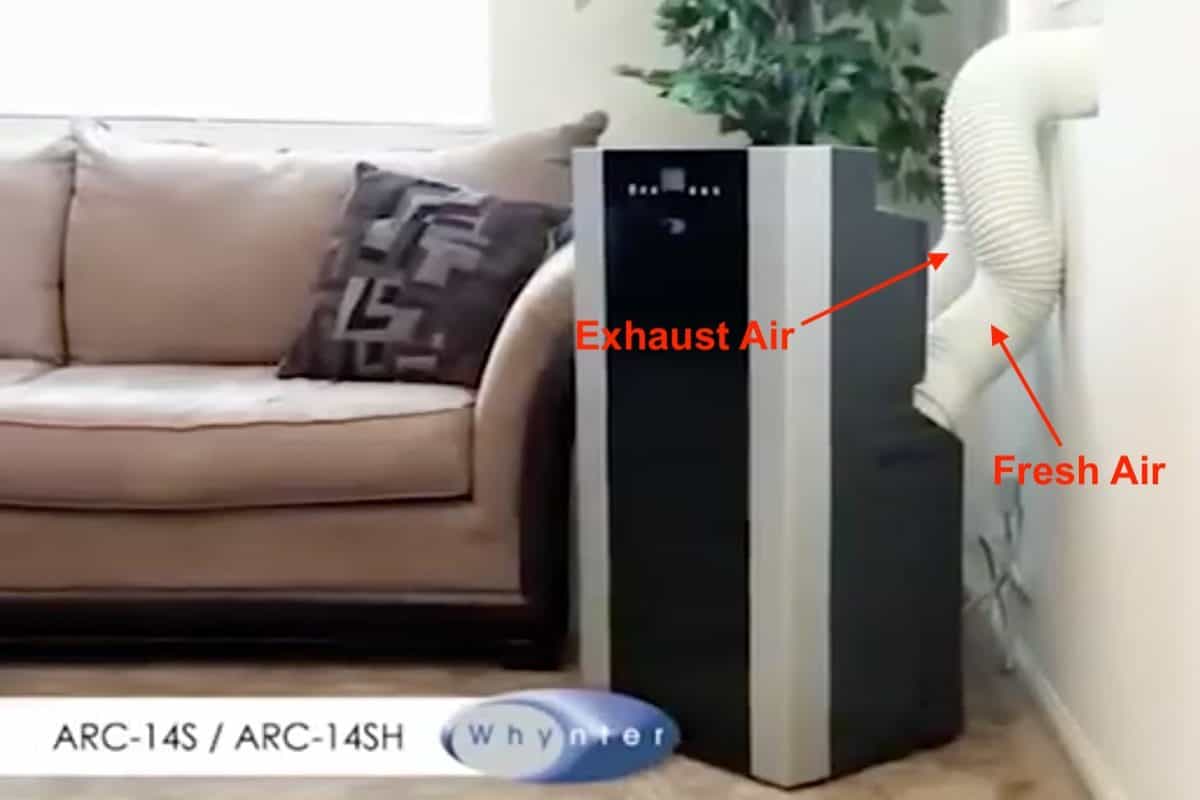
One of the highly-rated portable air conditioners with two hoses is this Whynter 14000 BTU dual-hose portable air conditioner (click to view on Amazon) with an active carbon filter that cools up to 500 sqft.
Dual-hose portable air conditioners are indeed more expensive but they often have more features than single-hose portable air conditioners.
Where Do Air Conditioners Get Air From?
Air conditioners get air from the recirculation process. Cold air coming out of the air conditioner is being circulated back to the air conditioner by the fan blower inside the air conditioner. By recirculating the air within the room, the temperature of the room can be gradually reduced.
When the fresh air intake vent on air conditioners is opened, fresh air will be drawn in and often channeled through a filter first before supplying to the room.
Why Do Air Conditioners Need Air from Outside?
Some air conditioners need air from outside to keep the people inside stay refreshed. Windows and doors are shut tight when air conditioners are in operation so that energy will not be wasted. That’s why air conditioners need to bring in fresh air from outside.
In addition, there are many codes and regulations that required houses and buildings to bring in a certain amount of fresh air through air conditioners in order to provide a healthy indoor environment.
If you have anything to add (or ask) about this topic, leave a comment down below!




